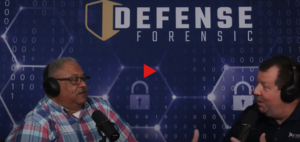The ever-changing digital landscape requires organizations to stay up-to-date on the latest technology, trends, and tactics. In particular, digital forensics and eDiscovery are two vital aspects of maintaining security and scaling operations. In this article, we will explain why you should use digital forensics and eDiscovery together in your organization’s policy or litigation needs.
Digital forensics is the practice of using scientific methods to gather evidence from computers or any other digital storage device for the purpose of a civil or criminal investigation. It involves collecting, analyzing, and presenting information about activity that has taken place on or around the device in question. This includes but is not limited to deleted data recovery, malware analysis, and identifying breaches in organization firewalls or networks.
eDiscovery (electronic discovery) helps find and identify electronically stored information. For example, this process could be relevant in gathering pertinent information for a legal case. Through advanced search capabilities like natural language processing (NLP) and key phrase detection algorithms, users can quickly uncover material essential to their needs, such as a lawyer could uncover material needed to formulate a successful argument. Additionally, eDiscovery can give users a greater insight into possible risks with regards to client data protection laws before heading into negotiations or proceedings.
Using both processes together allows users unprecedented flexibility when building an extensive network of potential evidence in support of a case’s corresponding argument. Organizations can acquire any physical or digital assets hidden behind complex networks without sacrificing required levels of due diligence concerning privacy rules set forth by various regulatory bodies such as HIPAA or GDPR. Combined with modern software solutions that work both proactively and reactively depending on the situation (ensuring endpoints are secure while investigating suspected infractions), organizations receive maximum safety at all times with minimal effort expended by IT personnel who would otherwise be devoting resources towards mundane tasks instead of actively resolving issues related to compliance violations/breaches etc.
In conclusion, incorporating Digital Forensics coupled with eDiscovery solutions saves your organization time and money. These combined solutions help to ensure that organizations have enhanced control over their respective networks while simultaneously reducing liability thanks to better systems built for gathering evidence in a prompt and efficient manner, while staying within accordance of industry regulations; all at a fraction of the time taken by traditional methods and services. Let your systems work together to produce a more viable and less time-consuming option than manual labor, which is traditionally associated with complying with stricter laws enacted over recent years concerning privacy matters etc. By leveraging these two tools together, organizations can secure themselves against future threats while also providing assurance that data remains secure from unauthorized access and malicious actors alike – safeguarding operations to allow for forward movement regardless if internal security protocols fail due to unforeseen circumstances/incidents.





